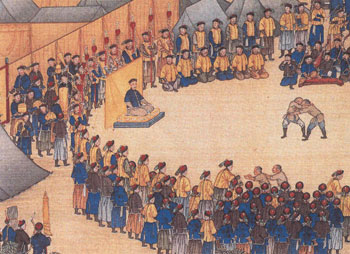Alright! So, after a lot of research, Before The Mat is finally live! If you’ve browsed our site, you already know what we’re all about, but in short the project is dedicated to exploring how grappling looked before it was consolidated into the major styles that we know today.
Our concept is to allow you to discover new wrestling styles in an interactive way, and to easily compare between them.
Despite that however, we also plan on writing a few articles in longer form as well. You can think of these as “bonus content”. We’ll be covering both certain individual wrestling styles, as well as some general topics, such as insights that we’ve obtained through our research. For some valuable context, we’ll try and sneak in some historical and geographical facts, but we promise to do so in an interesting and subtle way.
But before all that, we should first clarify some semantics:
What exactly is a traditional wrestling style?
Well it turns out that this question is actually very misleading, and there is no exact answer. According to Wikipedia: “A folk wrestling style is any traditional style of wrestling, which may or may not be codified as a modern sport.” But that by itself is not very informative – is it?
In fact, we couldn’t find a clear definition on the matter, so we ended up introducing our own list of (very flexible) criteria. Here it is, in no particular order:
- Time of origin – obviously, in order to be considered ‘traditional’ a wrestling style must date back a while. Some styles originated in antiquity (like Koshti pahlavani), while others are more recent (like Devon wrestling). For the purposes of our site we use the following rule of thumb: if we have data about it (and it meets the other criteria), AND it predates the 1900’s, then we’ll include it.
- Limited distribution – in our mind, being a folk wrestling style means that a style must be limited to only a few regions.
- Combat efficiency, Goals & Practitioners– more often than not, traditional styles of wrestling are practiced as a recreational activity, for ritual (during religious festivities) or for conditioning (as a means for staying fit). This way, the goals are different than these of martial (fighting) arts. And so are the practitioners – folk wrestling styles, as the name implies, are usually available to the common people, while historically martial arts were in most cases reserved for the warrior class of society.
- Striking & Gripping – some of the folk wrestling styles we review here do include a limited arsenal of striking techniques, but that’s not their main focus. Also, unlike the modern (Olympic) styles of wrestling, most of the styles you’ll read about here utilize grips on the opponent’s garments. So even though we say wrestling, we actually mean the more general term – grappling.
So keeping all that in mind, styles like SAMBO, Judo, and forms of Jiu Jitsu don’t qualify as traditional wrestling styles, and hence will not be main subjects for our articles.
What’s next?
So now that that’s out of the way, you can find our first article here.

